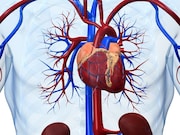Consistent benefit observed for patients with stable ischemic heart disease managed by revascularization
FRIDAY, Jan. 18, 2019 (HealthDay News) — For asymptomatic patients with stable ischemic heart disease (SIHD) and coronary artery disease (CAD), there is considerable variation in revascularization practice that is not explained by known factors, according to a study published online Jan. 16 in JACC: Cardiovascular Interventions.
Andrew Czarnecki, M.D., from the Sunnybrook Health Sciences Centre in Toronto, and colleagues conducted a retrospective observational cohort study using population-based data in patients with asymptomatic SIHD and obstructive CAD. Data were included for 9,897 patients, 47 and 53 percent of whom were treated with medical therapy and revascularization, respectively. Based on their revascularization ratio, hospitals were allocated into tertiles.
The researchers observed a twofold variation in the ratio of revascularized-to-medically treated patients between hospitals. Patient, physician, and hospital factors did not explain the variation across hospitals (median odds ratio, 1.25 in null model and 1.31 in full model). Revascularization was associated with a hazard ratio of 0.81 and 0.58 for death and myocardial infarction, respectively; this benefit was consistent across tertiles of revascularization ratio.
“How to treat these patients? Until we have better data, perhaps with ‘a lot’ of ischemia they should be revascularized and with ‘a little ischemia’ they shouldn’t,” writes the author of an accompanying editorial. “For me it’s worth the effort to try to enroll such patients in meaningful trials so their successors can be treated with more confidence that we know what is best.”
Copyright © 2019 HealthDay. All rights reserved.








